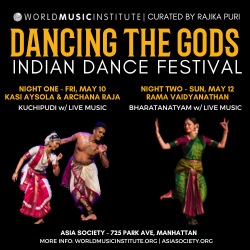Testimony to Committee on Cultural Affairs, Libraries and International Intergroup Relations
Monday, October 19, 2020
Testimony to Committee on Cultural Affairs, Libraries and International Intergroup Relations
On behalf of Dance/NYC, a service organization which serves over 5,000 individual dance artists, 1,200 dance-making entities, and 500 nonprofit dance companies based in the metropolitan New York City area, including BIPOC (Black, Indigenous, and Peoples of Color) dance workers, immigrants, and disabled dance workers. Dance/NYC joins colleague advocates working across creative disciplines in thanking the Committee for your leadership during this time.
In the midst of a racial and health pandemic, the necessary resurgence of the Movement for Black Lives, one of the most significant civil rights movements of our generation, and the signing of the most recent Executive Order 13950: Combating Race and Sex Stereotyping by the President, Dance/NYC has been working tirelessly to ensure that dance workers and organizations, particularly those led by and serving BIPOC, immigrant, and disabled communities are supported and resourced.
On June 22, 2020 and on September 15, 2020 we testified before this committee and called for:
- The Committee acknowledge the ongoing lasting impacts of slavery, establish and execute a plan to address those impacts, and repair the harm done by immediately establishing a Commission for Reparations for past and continuing harms inflicted upon Black and Indigenous people -- from colonialism to slavery, through food and housing redlining, mass incarceration, and surveillance;
- Prioritize funding to BIPOC Arts and Culture organizations to decenter Eurocentricism and white supremacy in mainstream New York City cultural representation in order to begin to undo pejorative and hurtful narratives, depictions and associations of/with Black and Immigrant and POC cultures. Substantial investment is needed in the organizations that authentically represent these communities.
- Committee reduces the proposed cuts to the Arts and Culture sector, particularly Black, Indigenous, and People of Color-led and serving organizations, redirecting funds otherwise used to fund the NYPD to ensure that organizations and their arts workers remain necessary workers and community members in New York City.
- The City to include the Arts and Culture communities in rent relief legislation (e.g, subsidized housing, cancel rent, rent relief subsidies) to protect our organizations and workers.
- The City provides financial relief for organizations and artists being affected by the affordability crisis and without business interruption insurance.
- The City pays living wages and funds programs that allow for the payment of living wages for dance and cultural workers.
To act on these commitments, this year alone, Dance/NYC has:
- Examined the racial impacts of our organizational practices and decisions, by removing and preventing racial inequities, and advancing racial justice both internally and publicly. a??This includes the establishment of salary floors that better reflect the increasing costs of living in NYC for our dance workers, offering adequate paid leave, providing employees with healthcare, and prioritizing much-needed times of rest to account for the rigorous emotional labor required to remain authentic and present in its services, particularly during moments of national unrest;
- Disseminated over $1 million in relief support to dance workers and dance making organizations,a?? primarily focused on BIPOC, immigrant and disabled communities, in addition to our ongoing grantmaking;
- Launched the #ArtistsAreNecessaryWorkers (www.Dance.NYC/ArtistsAreNecessaryWorkers/Overview)a?? campaigna?? and a 12 week series of conversations (www.Dance.NYC/ArtistsAreNecessaryWorkers/Tune-In) to highlight the importance of the arts ecology, point to current challenges and offer considerations on our way forward as a field in the midst of a health and racial pandemic;
- Collaborated with colleague arts service organizationsa?? that are mission-focused on increasing racial equity, inclusion and access for disabled people, and/or integration of immigrants into arts and culture;
- Created resource lists on our website under the issue areas of racial justice, land acknowledgment practices, a??disability and immigration, among others, in order to provide tools and information for how dance workers and organizations can best address the manifestations of white supremacy in their work; and
- Issued calls to action to the sector through two letters in response to the recent andongoing murders of Black people a??by the actions of white people, institutions and systems, including law enforcement, and the many accomplices, witnesses, and beneficiaries of white supremacy who have actively participated in or stood by and observed in silence.
In our work to dismantle white supremacy, Dance/NYC has identified four different ecosystems that reflect our spheres of influence and accountability, each with targeted needs and considerations where we have been investigating, identifying and undoing manifestations of white supremacy:
- Dance/NYC
- The Dance Field
- Arts and Culture Sector
- NYC, NYS, USA
As members of these collective ecosystems, it is our responsibility to examine our roles and remain accountable within them by engaging in a sincere process of self-reflection and deep consideration. As we strengthen our capacity to enact significant change, we recognize that institutions and systems founded under white supremacist values are not leading the change; we are merely heeding centuries of Black and Indigenous wisdom and Black and Indigenous leadership, which are the guiding force for how we interrogate racist systems. Defunding the police and funding social services, passing housing and healthcare reform, and ensuring Black and POC- led organizations continue to thrive are all important for the survival of artists, arts workers, the cultural life of NYC and are steps towards the envisioning of what anti-racist systemic reform could look like.
As we look to the future, Dance/NYC envisions a City wherein power, funding, opportunities, conduct, and impacts are just for all artists, cultural workers, and audiences— a place where dance can thrive. We recognize that racial justice does not exist individually or siloed from additional equity areas and interrelated forces of oppression (e.g., disability, anti-immigrant discrimination, economic justice) in its work nor in the lives of its constituents. Instead, racial justice requires an intersectional approach that builds upon multiple areas that together create a more just, equitable, and inclusive dance ecology meaningfully contributing to social progress. In our work, we seek to dismantle white supremacy and amplify the voices and autonomy of the BIPOC, disabled, and immigrant communities along the continuum of lives in dance, from the public school classroom to the stage and recognize generations of people and organizations engaged in this work and seek to contribute to their efforts.
Dance/NYC’s approach cuts across our public programs—advocacy and research; leadership training, networking and convening; technology and visibility; and regranting—and all aspects of our operations. We recognize that the planning and execution of racial justice work requires the investment of emotional labor, financial resources, and time. To ensure the sustainability and well-being of the organization, its staff, and its constituents, Dance/NYC only undertakes activities for which there are sufficient resources available. To that end, Dance/NYC is currently focused on three main issue areas:
- Racial Justice (a??https://www.dance.nyc/uploads/DanceNYC-OneSheet-RacialJusticeAgenda-V5.pdfa??)
- Disability.a?? a??Dance. Artistry. (a??https://www.dance.nyc/uploads/DanceNYC-OneSheet-DisabilityAgenda-V2.pdfa??)
- Immigrants. Dance. Arts. (a??https://www.dance.nyc/equity/immigrant-artists/immigrant-initiativea??)
For Dance/NYC and its constituents, the most urgent priorities continue to be:
- The City acknowledge the ongoing lasting impacts of slavery, establish and execute a plan to address those impacts, and repair the harm done by immediately establishing a Commission for Reparations for past and continuing harms inflicted upon Black and Indigenous peoplea?? -- from colonialism to slavery, through food and housing redlining, mass incarceration, and surveillance;
- The City to voice opposition to the President’s Executive Order 13950a?? and establish anti-racism training for all City employees including NYPD;
- The City provides immediate relief for our communities. a??We demand rent cancellation and relief, mortgage cancellation, a moratorium on utility and water shutoffs, and a cancellation of debt. We demand long-term economic solutions like a Universal Basic Income and Universal Healthcare in order to address the ongoing crises.
- Prioritize funding to BIPOC Arts and Culture organizationsa??. Substantial investment is needed in the organizations that authentically represent and are integral to these communities.
- The City ends the war against Black and Indigenous people by:
- Reallocating funding used to mobilize the police towards implementing community programs and services that will help our constituents to weather the ongoing racial and health pandemics.
- Withdrawing participation in police militarization programs.
- Enacting community control and holding the NYPD immediately accountable by external community reviews.
- Respecting the rights of protestors. We demand no harm come to protestors.
Community and culture are inextricably linked; and the planning and execution of racial justice work requires a united effort. We thank the Committee for the opportunity to share the anti-racism work Dance/NYC is engaged in and exhort the Committee to follow their commitment to dismantling racism with concrete actions, legislation, and investments into BIPOC communities.
##




